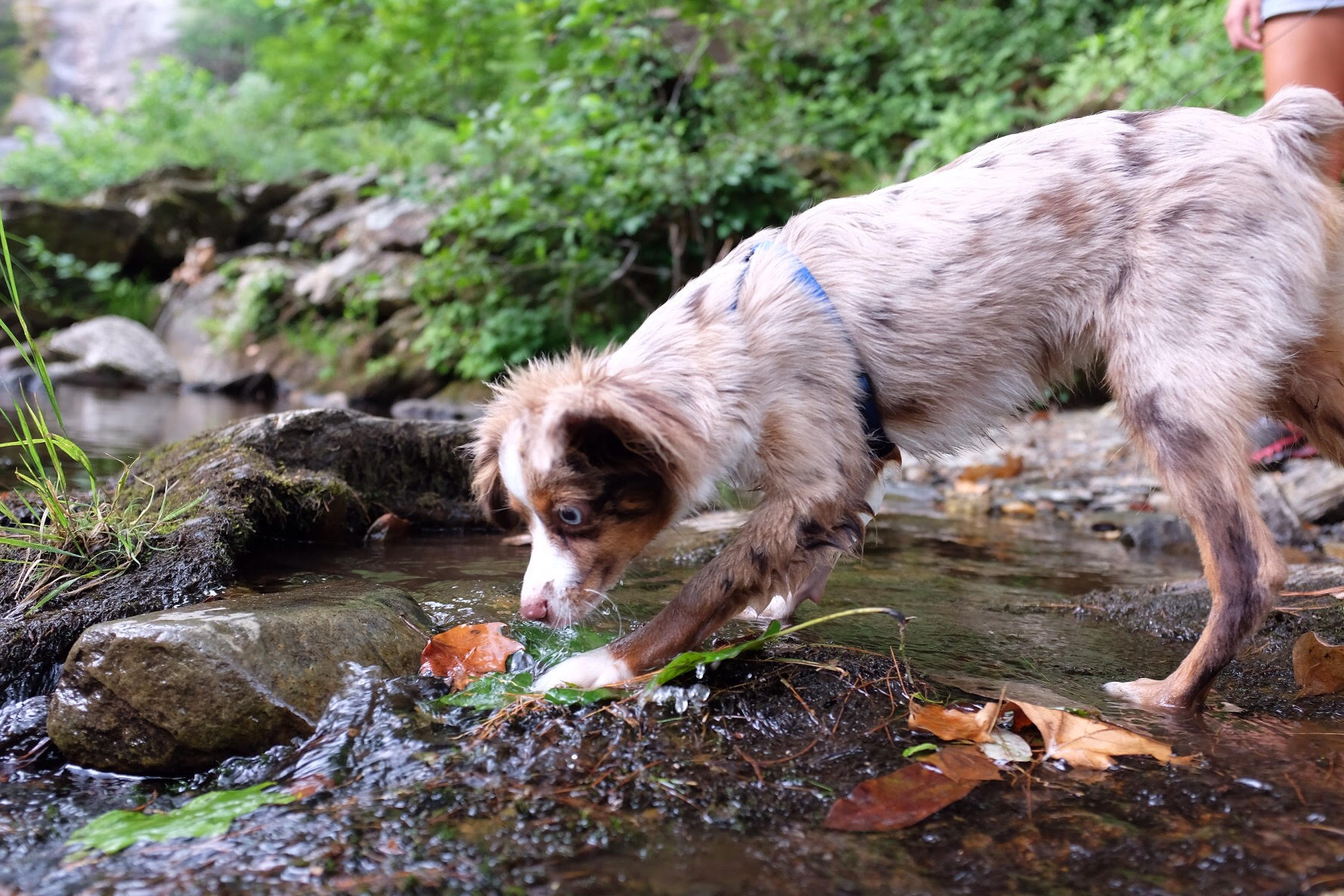Vaccinations play an important part in keeping your pet healthy and living a long, full life.
Vaccines help protect our pets from serious illnesses and even life-threatening diseases to which dogs are often susceptible. Knowing when to schedule necessary vaccinations is a primary job for any dog owner. With vaccinations, there is not a one-size-fits all schedule for every puppy or adult dog. Factors like where you live in the country and your actual dog’s individual risk factors come into play. Where most dogs need every vaccine, some do not, so it is very important to have a good relationship with your veterinarian and discuss your puppy’s vaccinations with them.
There are two general groupings of vaccinations:
Those that target “core” diseases and those that target “non-core” diseases. Core vaccinations, such as those for rabies and distemper, prevent diseases that are widespread in their distribution and are easily transmitted. Understandably, then, these vaccines are required for both puppies and adult dogs. Noncore vaccines, such as those for leptospirosis, are considered optional and are given based on factors such as a dog’s lifestyle or location. These vaccines still protect against highly contagious and potentially life-threatening diseases.
Here is a general guideline of the puppy vaccination schedule for the first year:
- 6-8 Weeks: Core Vaccinations: Distemper and Parainfluenza; Noncore Vaccinations: Bordetella*
- 10-12 Weeks: Core Vaccinations: DHPP (vaccines for Distemper, Adenovirus, Hepatitis, Parainfluenza and Parvovirus); Noncore Vaccinations: Coronavirus, Leptospirosis, Bordetella and Lyme Disease*
- 14-16 Weeks: Core Vaccinations: DHPP; Noncore Vaccinations: Coronavirus, Lyme Disease and Leptospirosis*
- 12-16 Months: Core Vaccinations: Rabies and DHPP; Noncore Vaccinations: Coronavirus, Leptospirosis, Bordetella, Lyme Disease
- Every 1-2 Years: Core Vaccinations: DHPP; Noncore Vaccinations: Coronavirus, Leptospirosis, Bordetella and Lyme Disease
- Every 1-3 Years: Core Vaccinations: Rabies (as required by law); Noncore Vaccinations: None
*Puppy shots should be a single dose spread out of a long recovery interval. Puppies should not be given anything like rabies (because of how potent the virus is) until they are close to a year old.
Also, exposure to disease is a big factor. Is the dog outside running free in the woods? Or in a city? Or in the backyard most of the time? Does the dog need more than the standard shots? Is the dog fed a healthy raw or comparable diet or a low cost kibble?
The science is not and has not been there to give Rabies, Distemper and Parvo every year. Additionally, by law in WA, the only shot required every year is rabies. Distemper and Parvo are not required, yet they give it every year. All of this equals over vaccination and the “rare” side effects.
Serious vaccinations are NOT rare. The reactions are under reported, dismissed, unrecognized by veterinarians with no training and shut down to not cause a liability claim. Always consult your veterinarian if your dog begins to have any side effects within a few hours of being vaccinated.
Some symptoms may not develop until months after the vaccination was given. Some other risks from vaccinations include: fever, sore joints, vomiting, anemia, susceptibility to infections, ear and skin conditions, allergic reactions, liver failure and autoimmune diseases.
Three questions a dog owner should always ask: 1) Is the vaccine safe? 2) Is the vaccine effective? 3) Is the disease dangerous?
What exactly is a titer test?
Instead of doing annual vaccinations, we recommend titer testing. This test involves measuring the level of antibodies against a particular disease in a sample of blood from your pet. When your dog gets a vaccination, their immune system then responds by producing antibodies which can be used to fight off future infections. A titer test determines how many antibodies your dog’s blood still has in it after one or more years from the time of being vaccinated. If a dog’s immune system is able to fend off the different diseases, there is not a need to vaccinate your dog. That is simply what the titer test is meant to determine.
So, for example, a titer test is used to determine if your dog has sufficient antibodies to make it immune to parvovirus, distemper or adenovirus. Some research suggests that having antibodies in the system does not necessarily mean that the dog is immune, but according to most sources, it seems to be a fairly accurate way to measure. Though this is a subject of debate in the veterinary world, if a dog shows a high enough count of antibodies to these diseases, re-vaccinating is not likely to be needed.
The titer test is not useful for canine leptospirosis, Bordetella or Lyme disease, as these vaccines only provide short-term protection. Also, no state will accept a titer test for Rabies as a measure of immunity instead of vaccination, as the rabies vaccination is mandated by law.
Titer tests can also be used by animal shelters during an intake with an animal, or during the outbreak of a disease to help separate the low-risk dogs from those at high-risk. You can also use tests with puppies after vaccinations to see if they are ready for socialization, or if you have adopted an animal and their vaccination history is unknown.
The opinion of how often you should titer test also varies in opinion. Some vets state that you should test every year to be safe, while others say every three to five or even seven years are all that is necessary. The important factor on how often to test all depends on what your vet recommends for your dog.
Here at Valor K9 Academy, we strongly support doing titer testing to avoid over-vaccinating dogs.
Canine parvovirus is a highly contagious virus that can affect all dogs…
But the ones at higher risk are unvaccinated dogs and puppies younger than four months of age. The virus affects the dog’s gastrointestinal tracts and is spread by direct dog-to-dog contact as well as contact with contaminated stool, environments or people. The virus can also contaminate food and water bowls, kennel surfaces, collars and leashes and the hands and clothing of people who have handled infected dogs. It is resistant to cold, heat and humidity and can survive in the environment for long periods of time.
Small amounts of feces from an infected dog may even hold the virus and infect other dogs that come into the infected environment. The virus is easily spread from place to place on the hair or feet of dogs, contaminated cages, shoes or other objects.
Some signs of parvovirus are:
- loss of appetite
- lethargy
- abdominal pain and bloating
- fever or low body temperature
- vomiting and
- severe and often bloody diarrhea
If a dog or puppy shows any of these signs, it is crucial to contact your veterinarian right away. Since parvovirus is extremely contagious, vaccination and good hygiene are crucial parts of preventing the spread of disease. Because young puppies are very susceptible to infection, it is important to provide the best protection against parvo during the first few months of life and have a series of puppy vaccinations given.
Until a puppy has received its complete series of vaccinations, pet owners, to be safe, should use caution when bringing their dog to places where young puppies or even unvaccinated dogs gather. These places are typically large chain pet stores, dog parks, doggy daycare, kennels and dog grooming centers. However, reputable establishments and training programs work hard to reduce the risk of exposure by practicing proper hygiene and cleaning their building multiple times per day, as well as by requiring vaccinations and health examinations.
In conclusion, for most pets, vaccination (or titer testing) is the most effective way for preventing future disease.
It is important to follow the vaccination schedule your veterinarian gives specifically for your own dog, or ensure antibodies via titer testing, to reduce the possibility of a gap in protection. In addition, being smart where you take your puppy for exposure, as well as concentrating on proper cleaning will go a long way in keeping your puppy a healthy and safe, lifelong companion.
By: Trainer Meg Rogers; Edited by Head Trainer Amy Pishner
Sources
https://dogtime.com/dog-health/51773-titer-testing-dogsPetmd.com
AAHA.org/pet-owner/aaha-guidelines/aahas-canine-vaccination-guidelines.aspx
https://www.avma.org/resources/pet-owners/petcare/canine-parvovirus-type-2c-faq
(Cover photo courtesy of Laryssa Martinovich- featuring her Miniature Australian Shepherd, Remi)







Leave A Comment